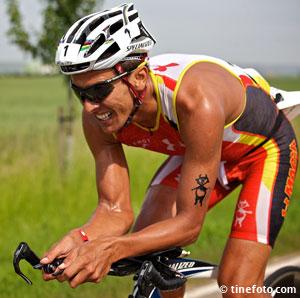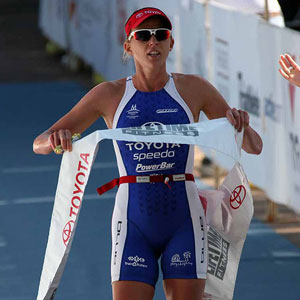TriStar
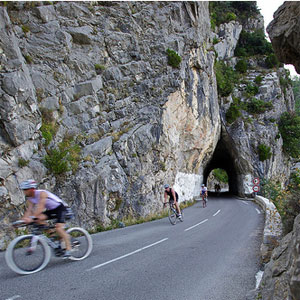
TriStar is run by Georg Hochegger, one of three founding partners of Triangle Events. These are the folks who put on successful Ironman races in Austria, Nice, Monaco and South Africa beginning in 1998.
Hochegger's original partners, Helge Lorenz and Stefan Petschnig, remain in charge of Triangle's major WTC races in Austria, France and South Africa.
Hochegger sold his share of Triangle to the WTC's new ownership group, Providence Equity Partners, in 2010. Now he has partnered with former Active Network International European Managing Director Laurent Gauthier, former Triangle France Operations Director and Ironman 70.3 Monaco race director Olivier Castelli, and Monaco-based private equity whiz Oliver Tim-Rott to form Star Productions SARL and launch the TriStar triathlon series.
Starting with one prototype event in late 2009, the TriStar 200 in Andalucia Spain, they expanded to four races in Europe in 2010: the TriStar 111 in Worms, Germany, TriStar 111 in Estonia, TriStar 111 Monaco and TriStar 222 in Sardinia. Their brand identity is, like Ironman 70.3 and the 5150 series, dependent on a number—111—which is the sum total of 1 kilometer of swimming, 100 kilometers of biking and 10 kilometers of running. Like the Abu Dhabi International, the choice favors the cyclists who like a challenge. In contrast to Abu Dhabi and, to a lesser degree, Ironman 70.3, the TriStar signature 111 distance is designed to allow the athletes to avoid a major post-race recovery.
"It's a unique distance and unique race concept," says Hochegger. "Thanks to shorter swim and run distances, the recovery period after the event is quicker and the horror of many athletes—long swim, killing run—is taken away. I think it is open to a greater audience."
In seeking both a distinct niche and a broad appeal, TriStar is walking a thin line between making their races both a challenge and a fun experience that won't leave new athletes too worn down.
They say they are not trying to take triathletes away from the Ironman and its shorter brands like 70.3 and 5150.
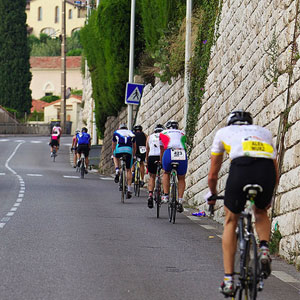
Chris McCormack, who served as a paid elite spokesman for the series and who raced three of the TriStar events last year, said that the distance was much harder than he thought it would be—for competitive elites. "A 100k bike was bloody hard," said McCormack. "It shocked some how hard it was. You had to swim fast fast fast, and then ride the bike with explosive effort because the run was too short to come back when you were a long distance behind. In the 70.3 races, if the pace is too much on the bike, you can back off a bit because you had a half-marathon to go. But if you just had six miles to run you cannot give up a minute or two on the bike. It is very bike-oriented, but that imbalance of distances creates a very different dynamic. I love the distance, which can introduce multiple options."
McCormack added that Hochegger saw an as yet untapped potential among serious cyclists to join the multisport crowd. "I had a great relationship with Georg in Ironman and half-Ironman events and he wanted to get started again," said McCormack. "He was heavily involved in cycling, and research on cycling events asked what's stopping you from doing multisport races? Many cyclists have a huge fear of the swim, fear of the run distances."
The second major element of branding for the TriStar races is their eclectic variety of race venues. In their 2010 lineup, TriStar picked one major elegant resort city (Monaco) which Hochegger and former Monaco 70.3 race director Castelli managed to take away from WTC; one smaller German city (Worms, population 81,700); one off-the-main-trail destination on the Italian island of Sardinia; and one longshot destination in the small village of Puhajarve, Estonia. In 2011, TriStar added smaller races in prestigious tropical destinations—Nevis in the Caribbean and Mallorca in Spain. They also added a medium-sized city, Lyon, France (population 515,000) and kept well-known Monaco and Estonia on their menu.
"Choosing these places was of course quite simple," said TriStar media chief Andre Karsai. "We want to bring people to great areas not known for big triathlon events yet. It's natural that triathletes like to travel and bring families and kids to new places they haven't experienced before. The second factor is we have to choose places that have great people who love the sport and have a lot of experience putting on great events. The organizers in Mallorca have been putting on first class events for 13 years. In Estonia, Ain-Alar Juhanson has put on events for several years while Lothar Leder in Germany was a rookie. Both benefited from strong personnel and equipment backup from TriStar.
TriStar's choice of Estonia was a long shot that would be off the radar for almost every established triathlon organization. Estonia is a tiny country with a population of 1.34 million that was part of the old Soviet Union. It is on the eastern shore of the Baltic Sea, nestled between Latvia, Russia and Finland. Today it is perhaps best known as the country where Skype was founded and a quick glance at Wikipedia shows it has abundant forests and much unspoiled countryside. And it seems to have been a modest hit with growth potential.
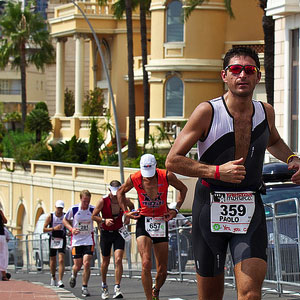
Former Ironman Lanzarote champ Ain-Alar Juhanson met TriStar owners at one of their early events and let TriStar executives know he has been race directing for five years and was ambitious to showcase Estonia as a triathlon destination—and to build enthusiasm within his country for the sport. Sensing potential in Juhanson's enthusiasm, TriStar invested 15,000 Euros prize money and travel assistance to draw a few headliner pros. They then went all out with parties, scenic and historic tours, and a zipline competition before the race.
When going up against the Challenge series, which has expanded greatly in Europe, Tri Grand Prix races, and the WTC juggernaut lineup of Ironman, Ironman 70.3 and seven 5150 races in Europe, TriStar has had a decent, albeit a manageably money-losing startup.
TriStar Andalucía, with little advance advertising in 2009 drew 91 individuals 35 teams totaling about 85 more triathletes. In 2010, TriStar Germany drew 480 starters and 469 finishers with 11 pros including McCormack, Christian Brader and Ain-Alar Juhanson.
TriStar Estonia drew 250 starters, offered 15,000 Euros prize money and drew 12 pros including Macca, Leder, Juhanson, Thomas Hellriegel, Bjorn Andersson, and Philip Graves and Desiree Ficker, who took home 2,500 Euros apiece. TriStar Monaco, helped by the buzz and TV coverage that accompanied several Formula 1 drivers taking part in the citizen's race, drew 621 starters and 16 pros, including Macca but no prize money. The TriStar 222 in Sardinia, which offered a 20,000 Euro purse and a just-short-of-Iron-distance challenge, drew 98 starters and perhaps their best pro field of 17, which included Lothar Leder, Jens Groenbek, Bjorn Andersson, Martina Dogana, Diana Riesler, Camilla Lindholm, and Bella Bayliss.
For now, TriStar won't be offering much in the way of big prize purses, but that is part of its future plans. "TriStar is brand new and [we are] taking it step by step," said Hochegger. "As soon as we have a significant series where it makes sense to distribute a good prize purse, we'll certainly do so and establish incentives interesting for pro athletes."
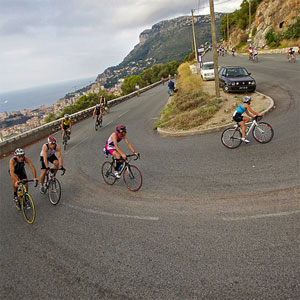
Right along with increasing prize money, Hochegger says his ultimate vision will be an international series of points races with regional championships and a grand final in Monaco. "Over the coming years, we're planning to build a top series on a maximum of 8 worldwide TriStar111 events with finals in Monaco. Our role model here is the F1 circus. Furthermore, the TriStar111 format has the potential to grow its own national and regional series within the global series, making it even more attractive to athletes, spectators, media and sponsors."
While Tri-Star's first season was modest, Hochegger feels that the number of triathletes he drew to his races in that first year is on track. "We are on schedule on our 5-year business plan," he said. "On this plan, we're profitable in year 3 – 2012."
TriStar also sees opportunity in North America, but they are playing their cards close to the vest given the rocketing growth of new races and series in the USA. Last fall, he held talks with Jack Caress, the Los Angeles Triathlon head honcho and a partner in the Life Time Fitness Series. "I met Georg and I know they've put on quality races for years with Triangle," said Caress. "Last July, I talked with Georg and his team about what they had done in Europe and I thought that the TriStar brand had a lot of appeal. We also talked about what would have to happen to schedule a TriStar race in the US."
Caress said that the fast-growing events in North America race series changed the picture a great deal by spring of 2011. "So much has changed in the world of triathlon since we first spoke," said Caress. "Ironman has expanded its 70.3 races and has added 13 5150 events in North America and 7 in Europe. Life Time Fitness added a few more races. Rev3 is adding events. And TriStar added stuff in Europe. "
So, said Caress, TriStar is looking to the US to add to their roster of races. "We came to a memorandum of understanding that if we find proper sites that make sense with that brand, we could go forward."
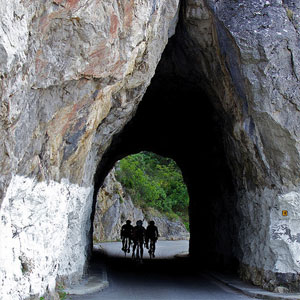
Caress's point explains a lot about what it takes to build a series today. "It's a little disturbing when people start grabbing sites and races that do not fit their brand," he said. "Neither I nor TriStar want to get into a land grab routine just for the sake of it. But if the opportunity exists, we won't ignore it. We are in a unique time in the sport of triathlon in terms of growth. Eventually there will be some consolidation. If you're in this business it is important to have great venues.
"We are looking at some sites. If they make sense with Tri Star, if there is some long term value to expand to a worldwide brand, if there is an opening, we will explore it. We think that large segments of the triathlon population like to do sprint triathlon and Ironman and everything in between. And they are open to new concepts—such as TriStar's longer bike and shorter swim and run. I think a lot of athletes will like that model."
TriStar's communications director Andre Karsai takes a cautious approach to the European market for triathlon events. "We are trying to find a balance between expanding on one side and making sure we do not expand too quickly," he said. "It's the pretty much the same for everyone, whether it is Challenge or Ironman or TriStar or other great organizations. They all want to bring maximum people to the sport and to their races. It is a good thing that the market in Europe is not oversaturated and it is still a growing sport without too much density."
After their modest start, TriStar must meet the challenge of heavy competition from other series which have head starts in securing a permanent place in the European calendar, and must decide whether there's an opening in the crowded North American triathlon market for their brand.


